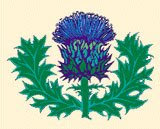In An Old Virginia Town - Part 7
Originally published in Harper's New Monthly Magazine
March 1885, pages 601-612.
Author: Frederick Daniel
(Continued from Part 6)
The exact spot of her [Mary Washington's] grave, on a rocky crag, was selected by her, as she declared, "because it never could be cultivated." There in 1832 was laid the corner-stone of the monument since erected over her grave, under the eye of President Andrew Jackson, with an imposing military and civic display. It was during his trip from Washington to Fredericksburg to attend this ceremony that the nose of "Old Hickory" was pulled for the first and last time in his life. According to the account of an eye-witness, as the steamboat conveying the Presidential party down the Potomac touched at Alexandria, a dismissed office holder deliberately went up to the President and tweaked his venerable nose. The by-standers immediately seized the intruder and had begun to pummel him, when the General, lifting his redoubtable cane, cried out: "Let him alone; I'm able to defend myself against the scoundrel!" Thereupon the "scoundrel" was hustled off the boat, and the Presidential dignity was saved.
The erection of a monument to "Mary the Mother of Washington" was proposed and undertaken by the citizens of Fredericksburg; but for some reason the job was delayed, until Silas E. Burrass, a New York merchant who was at the time courting a member of the Washington family, asked as a favor to be allowed to defray the entire expense. His offer was accepted by the building committee, and he at once furnished them with the means to proceed in the undertaking. The work was nearly completed, thanks to his liberality, the drafts made on him having been regularly paid, when his failure in business put a sudden stop to the erection, and the monument was left in the unfinished condition in which it stands to-day. At this juncture of affairs, moreover, his offer of marriage was declined by the lady. Fortunately the monument only lacked its shaft. There is no doubt that this small lacking was an advantage, from an æsthetic point of view, seeing that the monument was a little gem precisely as left by the workers, and could only have been disfigured by a disproportioned shaft. It would, in fact, have been difficult to hit upon a more suitable design for a monument to the memory of Washington's mother than the one actually carried out; it's elegant simplicity and graceful proportions are entirely in accord with the canons of good taste.
The monument stands on the crag mentioned in the midst of the wide plain between two long parallel ranges of hills, one on the Stafford side, and the other on the Spotsylvania side, or at the beginning of the superb valley extending many miles down the Rappahannock River. The site could not have been more aptly selected, the view from the crag being very fine: from out of the middle of the plain, covered with rich greensward and dotted with sheep, the monument is visible as a central point of attraction within a wide area of hill and dale. Its cost was $10,000. It consists of solid, uncarved marble blocks inclosing a "filler" of cemented granite stones, the whole forming a square measuring twelve feet at the base and ten feet at the top. The blocks are so placed as to inclose broad tablets for inscriptions – though there is not a single word on them – and above these tablets small fluted columns, two on each side, extend to the top frieze. Only four of the columns remain, the other four having been broken and removed. The entire height is twenty-five feet; the quadrangular shaft which was to have "crowned the edifice," and which now lies in rough about ten feet away on the ground, is twenty feet long and four feet square at the base. Both the shaft and the blocks used in the structure were brought from Carrara.
An appropriation was recently made by Congress for the completion of the monument. Certainly no better design could be suggested than the one adopted in 1832 by the citizens of Fredericksburg – always omitting the shaft, as they in effect omitted it. The design might be carried out on a more extensive and costly scale without any very objectionable loss: but the substitution of any loud, gorgeous "pile" for the present modest memento would be a mistaken kindness both from a patriotic and an artistic stand-point. After all, the best monument to Washington, let us hope, is the veneration of each succeeding generation of Americans. There is a small private grave yard, walled in and planted with a few willow-trees, within three feet of the monument, adding to rather than detracting from its appearance. The promenade across the grassy plain to the monument is a favorite one with the young ladies and gentlemen of the town.
(to be continued)
Subscribe to:
Post Comments (Atom)

No comments:
Post a Comment